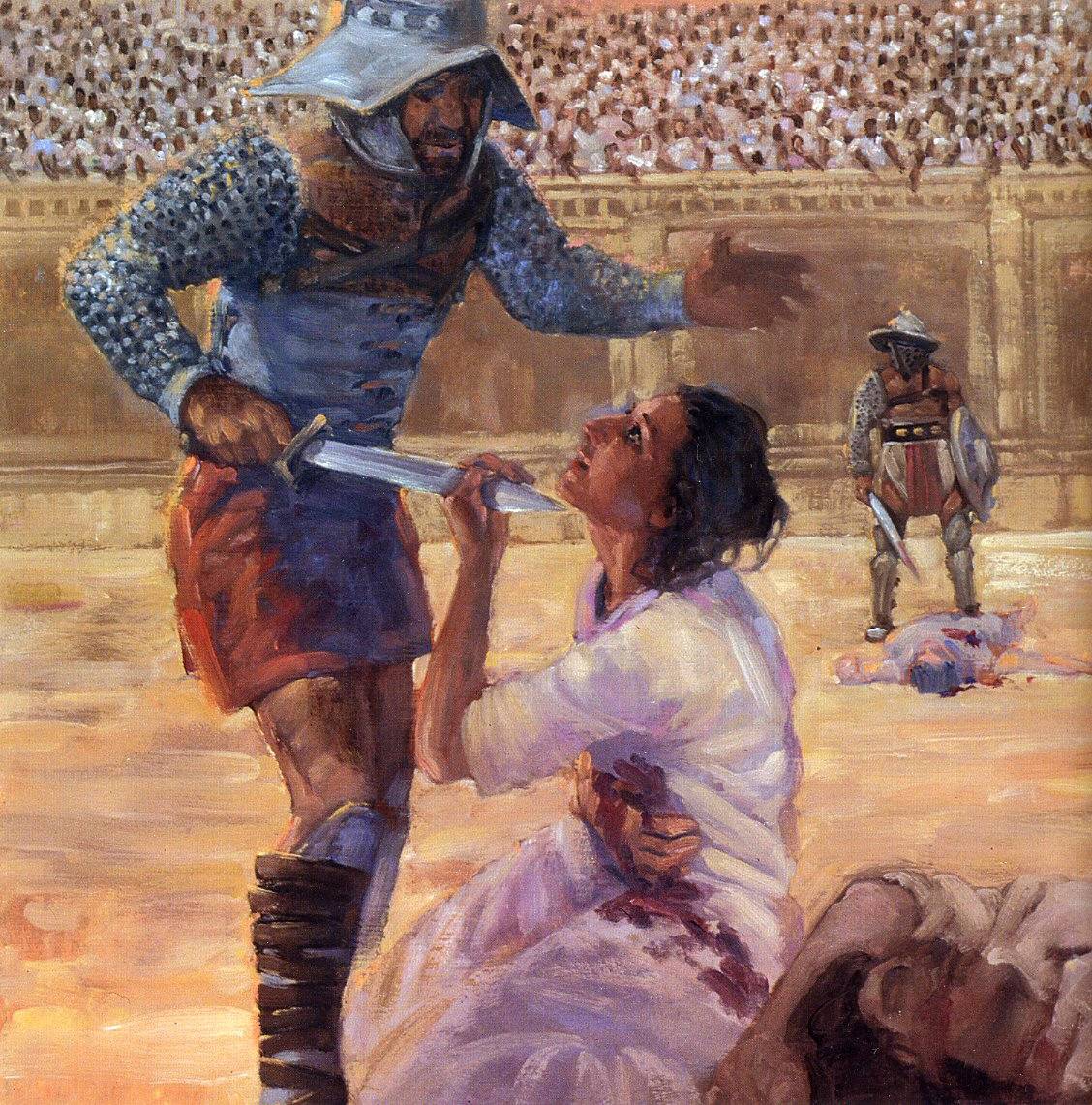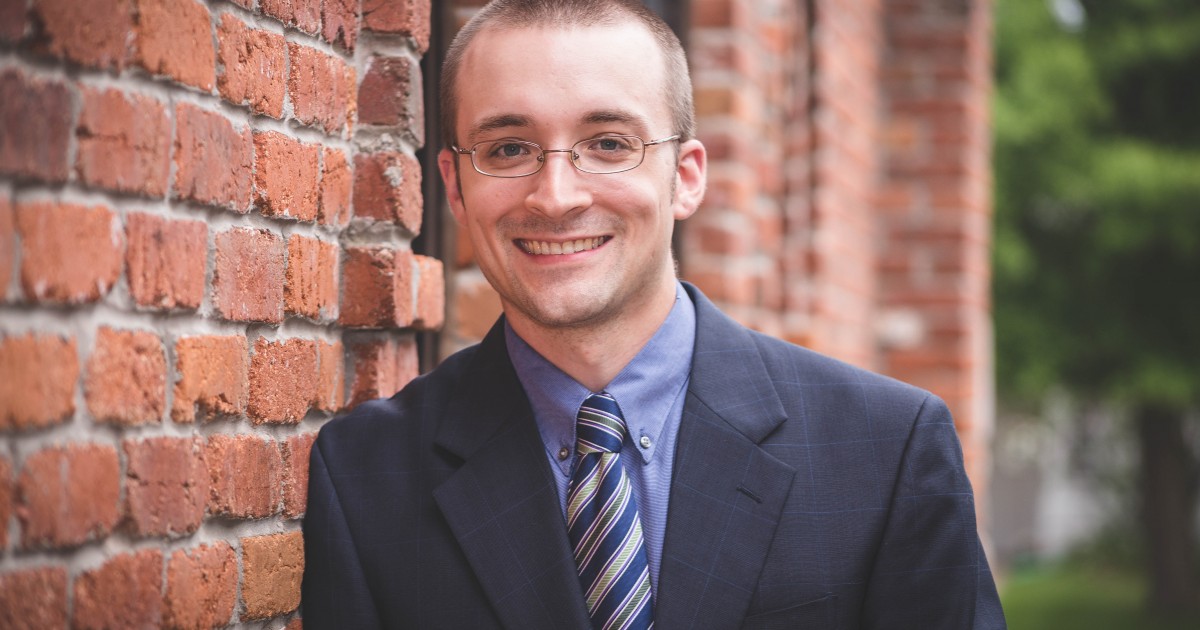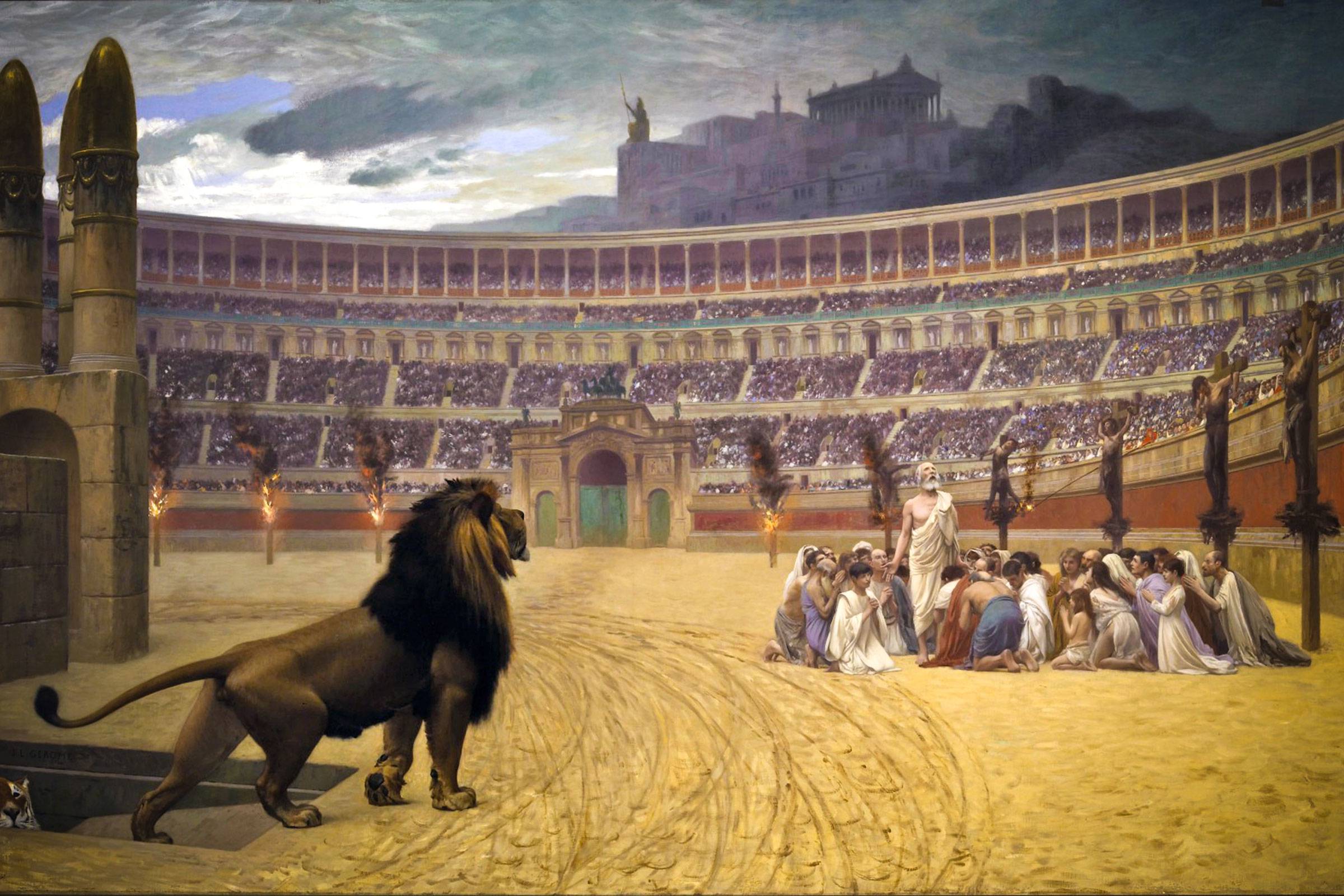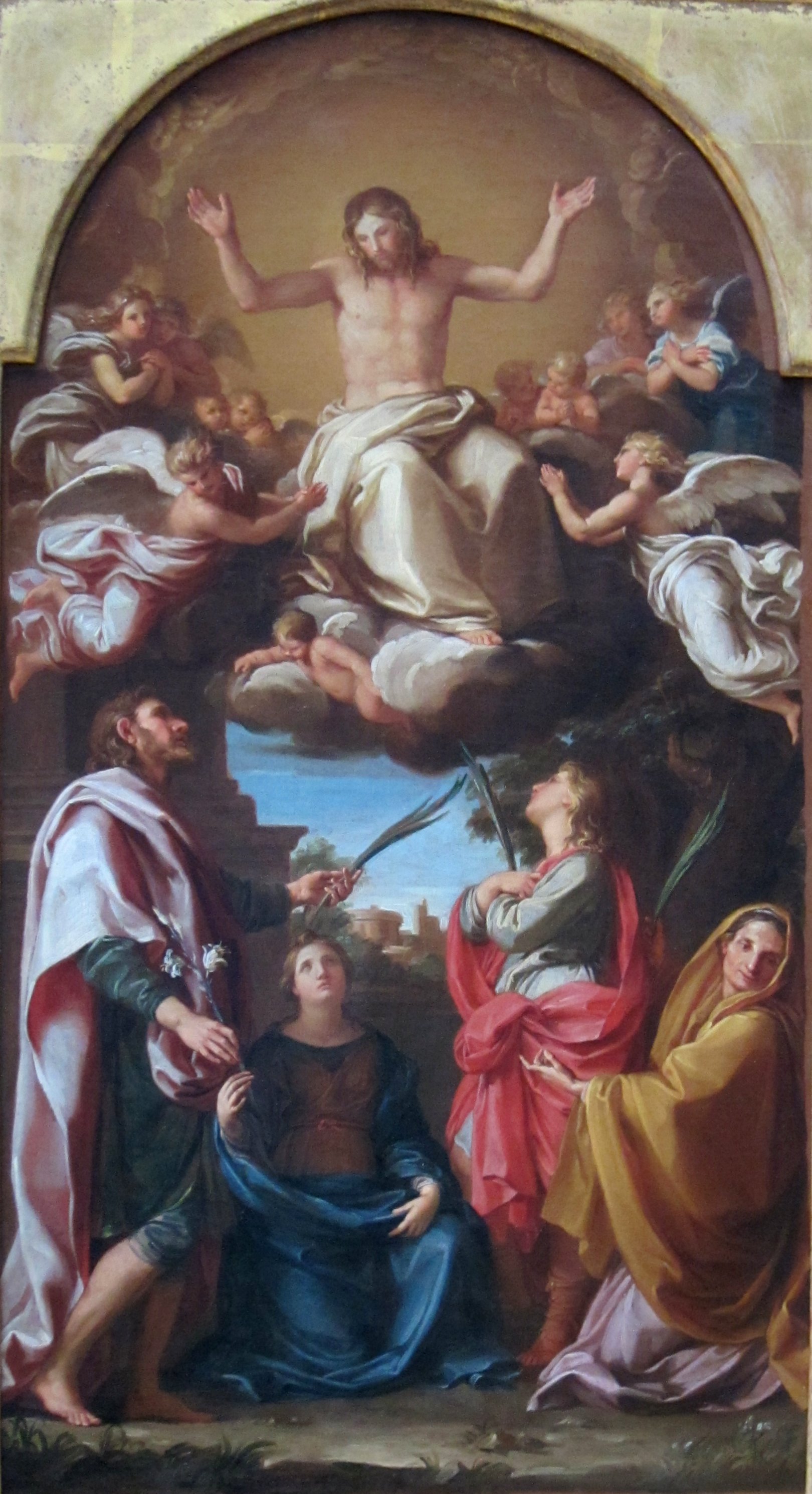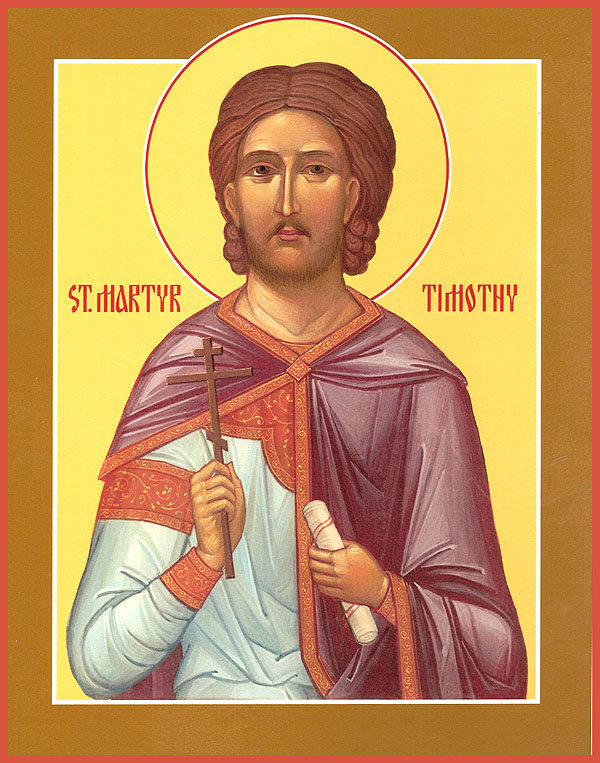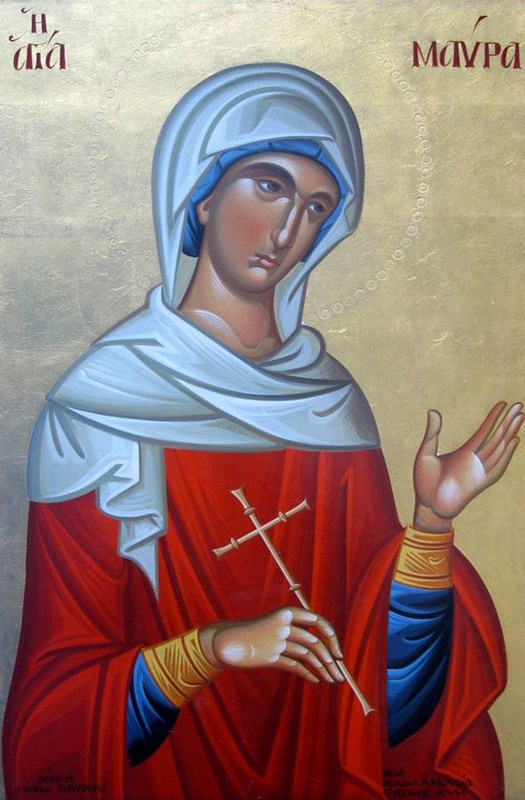
-fresco of St. Ignatius from Hosios Loukas Monastery, Boeotia, Greece
“The apostles left the Sanhedrin, rejoicing because they had been counted worthy of suffering disgrace for the Name.” -Acts 5:41
Catholics are NOT NOT NOT to actively seek martyrdom!!!! That would make them Marcionites, who did, and NOT Catholics!!!!!! Catholics are to accept it if unavoidable. Enthusiasm, however….
I have two dear friends who are sisters. They are practically giddy protesting/dissuading/resisting outside abortion clinics. While there they may sit in a car together to rest or respite from the elements. Their giddiness stems not only from their holy action, but from the dream of martyrdom while so engaged. They also dream of the rocketing of their causes for beatification to the top of the list!!!! I imagine an attacker with a shotgun taking them both out while they sit in the front seats of the car together. Only Catholics!!!!
I have decided the color (and here) for our current martyrdom of reputation is black, as in “to blacken the name”.

-by Elijah Dubek, OP
“The letters of St. Ignatius of Antioch (35-108 AD) were some of the first writings of Church Fathers I ever read. One of my friends bought me a copy of The Apostolic Fathers, and the summer before I entered seminary, I read through them. Saint Ignatius’ excitement, even enthusiasm, for martyrdom, was striking and memorable:
Fire and cross and battles with wild beasts, mutilation, mangling, wrenching of bones, the hacking of limbs, the crushing of my whole body, cruel tortures of the devil—let these come upon me, only let me reach Jesus Christ! (St Ignatius’ Letter to the Romans 5:3)
This martyr begs the Roman Christians not to interfere with his impending martyrdom, but if they must, they should coax the beasts to devour him completely, that his body may not be left behind as a burden for anyone.
When I first encountered these words, the enthusiasm was contagious. As I return to them, it is their courage that strikes me. Here is a saint who knows that the only way to follow Jesus Christ is to take up one’s cross, which led St. Ignatius to his own death. His fear, however, is not of the wild beasts that will tear him apart and cause him pain. No, he worries that fellow Christians, well-intentioned perhaps, will “save” him from this cross. “For I am afraid of your love, in that it may do me wrong….I implore you: do not be unseasonably kind to me” (1.2, 4.1).
Violent martyrdom of this kind, especially enthusiasm for such, is often hard for us to swallow. It is not that we don’t hear the words of the Gospel: “Whoever wishes to follow me must deny himself, take up his cross, and follow me” (Mt 16:24). Perhaps we have the same difficulty that Peter and the disciples had when Jesus first began predicting for them his coming Passion—Peter himself even tried to rebuke our Lord! We are happy to follow our Lord, but we fear the cross.
Saint Peter, of course, comes to understand, even enduring martyrdom himself, and perhaps it was St. Peter’s preaching that St. Ignatius heard in Antioch decades before his own martyrdom in Rome. So why are they no longer afraid of the cross, even eager to embrace it? Like St. Paul, they know that “the sufferings of the present time are nothing compared to the glory to be revealed in us” (Rom 8:18). Despite his enthusiasm, St. Ignatius is certainly not excited for mutilation, mangling, wrenching, and hacking for their own sake. No. He says, “Let these come upon me, only let me reach Jesus Christ!” The sufferings of the present are bearable because of the promise of Jesus, because through them, Jesus brings us to Himself.”
We MUST imitate Him in ALL things!!!!
Love & Martyrdom!!!!
Matthew

